A friend in the crypto circle, a tough guy from Beijing, three years ago after a phone call with me said he lost everything in contracts +3 times, totaling a debt of 60 million. Then he went silent for three years. Now that he has cleared his debts, he is currently worth several million and earns a seven-figure monthly income with an eight-figure annual income in the crypto circle!
Recently, I summarized the methods he developed over these three years, organized them, and through thousands of trading practices, the success rate surprisingly reached 98%. Now sharing with those destined to receive it.
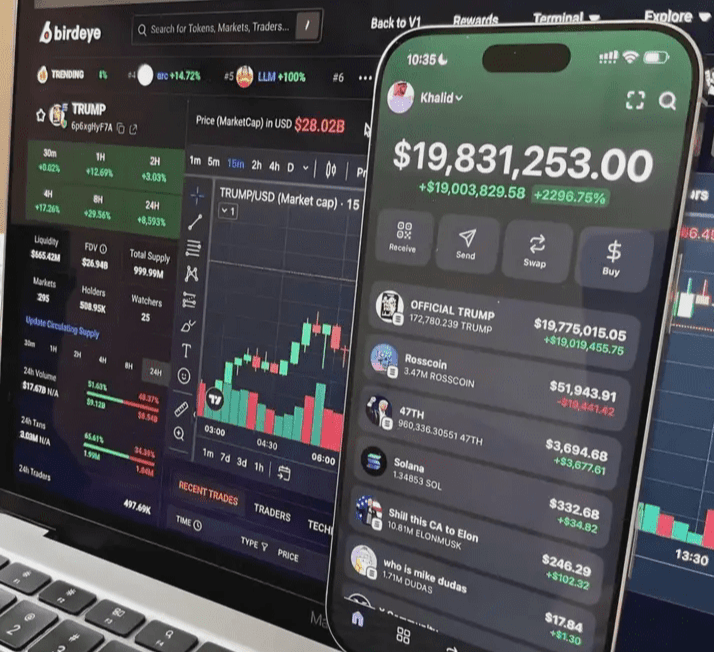
Iron laws of trading.
First, for those coins with complex situations that you can't see clearly, don't rush in. Pick the softest persimmons to squeeze, trading is the same.
Second, do not invest all your money into one coin at once, even if you are very optimistic about it, and even if it later proves you right, do not invest all at once. Because the market is volatile, no one knows what will happen tomorrow.
Third, if you mistakenly buy a coin in a downward trajectory, you must quickly sell to avoid expanding losses.
Fourth, if the coin you bought is currently not at a loss but has entered a downward trajectory, you should quickly exit and observe.
Fifth, for coins that are not in an upward trajectory, it is advisable to pay less attention to them. No matter how things turn out, don’t accompany the main players in building positions. Retail investors don’t have the time to waste with them.
Sixth, do not fantasize about being able to make money while constantly trading short, entering and exiting every day. Frequent trading may bring you pleasure but will cause you to lose a lot of money. The only beneficiary is the exchange, and you don't have that high of a skill level; you are not a market maker. Do not buy too many cryptocurrencies, best not to exceed 10, as you do not have the energy to monitor them all. It's like wanting to marry five wives; even if you're fit enough, you won't satisfy them. The story of Wei Xiaobao only happens in novels.
Seventh, just because a coin is very cheap and has dropped a lot does not mean it is a reason for you to buy. It could get even cheaper!!!
Eighth, just because a coin is very expensive and has risen a lot does not mean it is a reason for you to refuse to buy or sell. It could rise even higher!
Advice
1. Do not easily throw away bull coins; choose bull coins first, gain half the way, engage in both hot and strong coins, suitable for both investment and speculation.
2. The most important thing for a trader is the ability to adapt during trading.
3. Qualitative analysis must be done well. Qualitative analysis for long cycles, selecting coins on a weekly basis, identifying on a monthly basis, and tracking on a daily basis.
4. Follow the rules; use Bollinger Bands or the moving averages you believe are feasible to assess the market.
5. Skills are taught with no tricks; it all relies on technical proficiency. Repeat successful experiences until making money becomes a habit. Regular profits are more important than big profits.
As someone who has been in the crypto circle for a long time, today I summarized 12 iron laws of trading, each a lesson learned through blood and tears. After reading, you can avoid losing 100,000!
1. The time difference between East and West: Staying up late is necessary to monitor market trends, which mainly focus on European and American times (Beijing time 21:30-7:30), with significant rises often occurring at night! So, do you want to make money? Staying up late is a must! Sleep at 20:00, wake up at 4:00 to watch the market; that’s the schedule of a qualified trader.
2. Don't panic when there's a big drop during the day: Is the foreign market pulling the price up while the domestic market drops? Don't be afraid! At 21:30, when the foreign traders enter, they'll pull it back instantly! Remember: a big drop during the day is a buying opportunity; don’t chase high when it’s rising; it’s likely to drop back in the evening.
3. The deeper the pin, the stronger the signal: K-line pins (long upper and lower shadows) are a common tactic of market makers; the deeper the pin, the stronger the reverse signal!
Pinning is often the best time to buy or sell; don’t be fooled by market makers!
4. News landing means negative effects: Before major meetings or positive news, the price will definitely rise, but once the news lands, it will drop immediately! So, layout in advance; when the news comes out, run quickly; don’t be greedy!
5. Heavy positions lead to liquidation; light positions are the way to go: Heavy positions? Congratulations, you are already on the exchange's liquidation list! Market makers specifically target users with heavy positions; a single pull and drop can liquidate you in minutes! Thus, light and diversified positions are the way to survive.
6. After a stop-loss, the price drops; after a take-profit, the price rises: After a stop-loss for a short position, the price drops; after a take-profit, the price rises. The market makers don’t want you to make money! So, be cautious with stop-losses and take profits in batches; don’t let the market makers lead you around!
7. Almost breaking even: Stop dreaming: Are you about to break even? The rebound has suddenly stopped! How can the market makers let you escape easily? So, when close to breaking even, appropriately reduce your position; don’t be greedy!
8. Excitement = waterfall warning: When you are overly excited, the waterfall is coming! Market makers use your emotions to cut you off, so keeping calm is the way to go!
9. When you have no money, and there are opportunities everywhere: When you're broke, every coin seems to be rising, and FOMO is at its peak! But remember, 80% of the market is manipulated; don't rush in. Patience is what makes a winner!
How can we survive long-term in the crypto circle? To survive and succeed in the crypto space long-term,
You can follow these key strategies:
1. Risk management.
Use spare money for investment, avoiding high leverage or loans.
Set a stop-loss point; once the preset loss limit is reached, sell decisively to prevent further losses.
2. Investment strategy.
Diversify your investments: Do not put all your funds into one project, but instead diversify your investments across different coins and projects to reduce risk. Hold long-term: For quality projects, hold for a longer time to leverage the compound effect for wealth growth. Sell at the right time: If there are obvious negative news at market highs, it may be a good time to sell.
3. Information acquisition and processing.
Establish your information sources, such as CoinMarketCap+, Defillama+, etc., to obtain accurate market data.
Learn to discern the authenticity of information to avoid being misled by false information.
4. Psychological adjustment.
Stay calm and not be affected by short-term market fluctuations.
Set reasonable expectations to avoid overtrading and frequent operations.
5. Continuous learning.
Regularly learn about blockchain technology and digital currency to stay in sync with industry developments, participate in community discussions, and exchange experiences with other investors to broaden your horizons.
6. Balance life and investment.
Ensure that investment activities do not interfere with daily life and health.
Maintain physical and mental health to better cope with the challenges in the investment process.
Proven method, turning 500,000 into 10 million using just this one trick (moving average method), with a success rate of 99%, suitable for everyone!
I remember when I first stepped into the trading market, I tried every possible way to search for knowledge about it online, hoping to learn everything as soon as possible so that I could quickly start trading and making money.
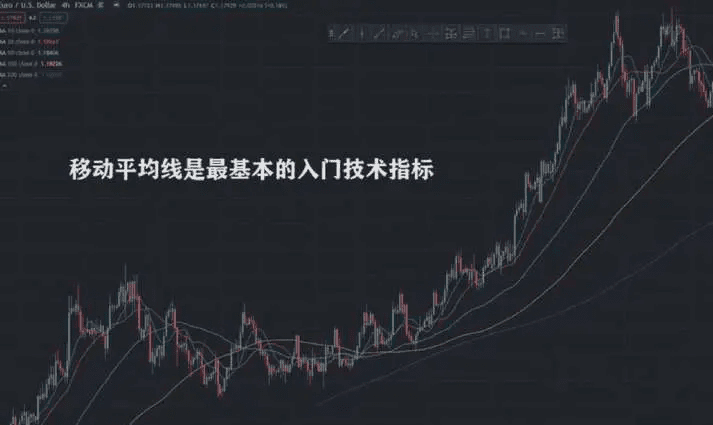
At this time, moving averages...
Usually, these are the earliest technical indicators I learned, and most online teachings are about how to use two moving averages, a fast one and a slow one.
Buy when the fast line crosses above the slow line from below; sell when the fast line crosses below the slow line.
This kind of golden cross and death cross trading strategy is like a treasure for beginners because compared to other more complex technical indicators, the golden cross and death cross are at least feasible for novices; they can be immediately monetized. If you really believe in it and enter the market immediately, the outcome is predictable: you will definitely suffer significant losses, and then every day you will be on edge, angry about why you lost money, blaming the heavens, blaming the earth, blaming the ineffectiveness of moving averages.
What I just said is 100% based on my real experiences, mistakes I made when I first started trading. I believe this is also the experience of many newcomers today. I hope through this article to share with you all the moving average techniques I've learned over the years, summarizing mistakes made before and insights gained, so you won't repeat my mistakes, and at least your path will be much smoother than mine back then.
I've summarized that most people's understanding of moving averages is incorrect because it's too superficial. They simplify it too much, thinking that seeing a golden cross means buy, and a death cross means sell. In reality, what we truly need to do is to think about how to use moving averages to maximize your profit and enhance your trading performance.
Today I will discuss two major themes with everyone.
First: Is there a universal parameter setting for moving averages?
Second: How to use moving averages to help us achieve a threefold return on investment.
First, the secret of moving averages.
What is a moving average? Conceptually, it's easy to understand; it’s the average price over a certain period, visualized as a line chart.
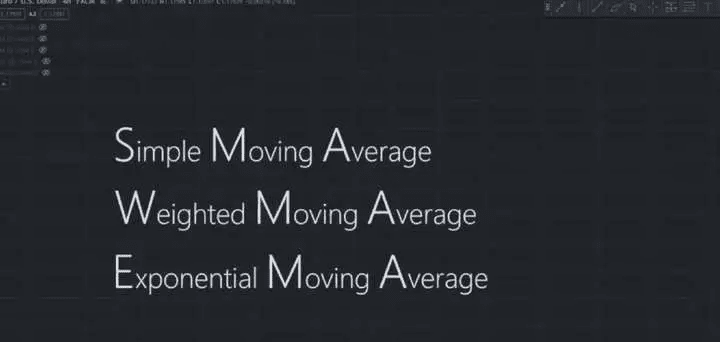
There are three common types of moving averages.
SMA (Simple Moving Average).
WMA (Weighted Moving Average).
EMA (Exponential Moving Average).
SMA is simply dividing all prices to get an average. It reacts slowly to recent prices and market trend changes. EMA and WMA have the same concept, just different algorithms.
They will tend to have more weight, so the speed of adaptation will be faster, and they will be more sensitive to significant recent price changes.
First: Is there a universal parameter setting for moving averages?
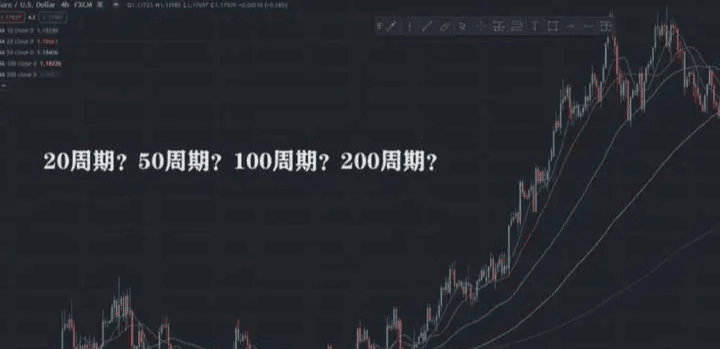
Actually, the most frequently asked question about moving averages is whether there is a universal parameter for them, and what is the best parameter? Is it 20? 50? 100? Or 200?
This question is like going to a coffee shop and saying to the staff: 'Please give me a cup of coffee!' The staff will ask you: 'Sir, what kind of coffee do you want?' I say, 'I don’t understand these; just give me the best coffee.' Generally, if an impatient staff member is there, they might just give you a cappuccino, you pay, and walk away.
It’s like some online teaching telling you to use the 144EMA and 68EMA; whenever the 68 crosses above the 144EMA, you should buy or sell. It’s completely confusing.
On the contrary, those responsible and patient staff will slowly guide you: 'Sir, do you want iced coffee or hot coffee? Do you want coffee with milk or without?' Cappuccino has softer foam, Mochachinno has chocolate syrup and is a bit sweet, and Espresso is rich and fragrant. If you like black coffee, you will definitely be satisfied.
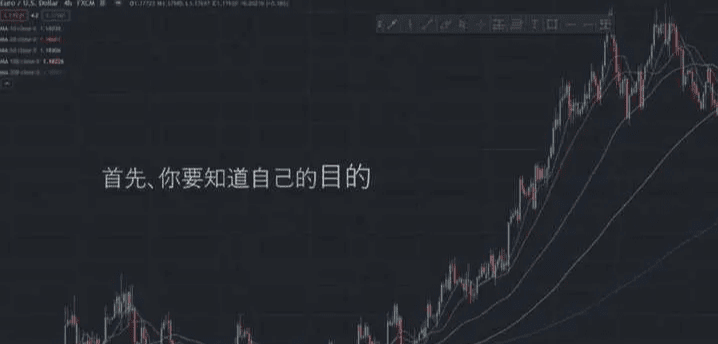
Similarly, as a responsible and patient trading coach, I would ask, what is your purpose in using moving averages?
Do you want an objective indicator to judge long-term trends? Or do you want to seek a better entry point? Or do you want to use moving averages to set a stop-loss point?
All of the above can actually be done with moving averages.
But here’s the key: I can responsibly tell everyone.
There is no best moving average parameter setting in this world.
Only the most suitable parameter settings!
And this parameter should not be decided by you or me, or anyone else; the market itself determines it. Depending on different market conditions, different trends, and strengths, the most suitable parameter settings will vary.
We will judge which period's moving average is most suitable for this market based on two words—adhere to.
Here, I use the three most common moving average periods of 20, 50, and 200 as examples. Let’s look at the examples of these three parameter settings being followed by the market.
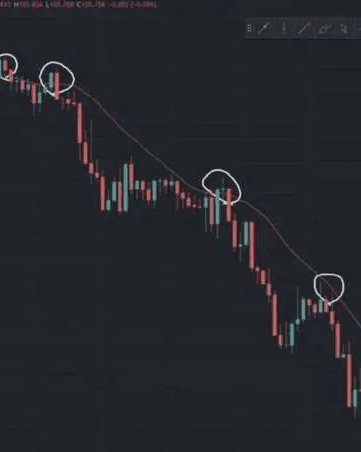
We see in the image above that the current price is in a downward trend. Each time the price touches the 20EMA, it seems to be under invisible pressure to continue to drop, indicating that the market is currently following this 20-period EMA.
Let’s switch to comparing the 50 and 200 period moving averages. Can you see the difference? They both confirm that the market is in a strong trend, as the 20 period moving average is most suitable for relatively fast trends with smaller retracements.
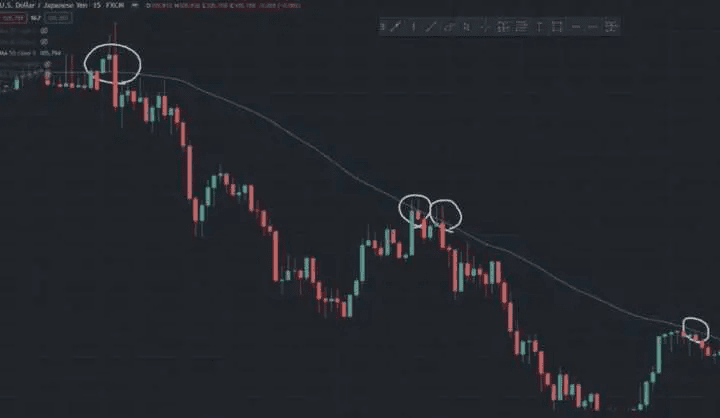
The second example.
I see the market following the 50-period EMA, which indicates that the market is in an upward trend.
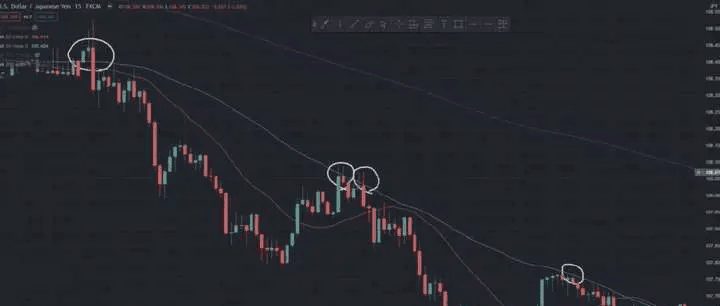
If we look at the 20 and 200EMA, we will find that the 20EMA is not very suitable because it constantly intersperses between prices, while the 200EMA is too far from the price.
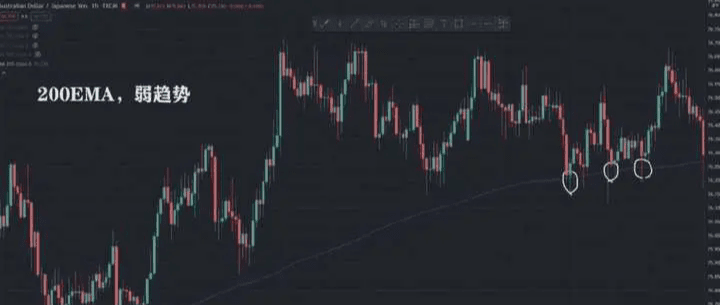
The last example, 200EMA, is more suitable for a long-term and relatively weak trend. Although the intervals of price touches are relatively far apart, from a larger direction, the market is following this 200-period moving average.
Overall, the trend continues to move upward.
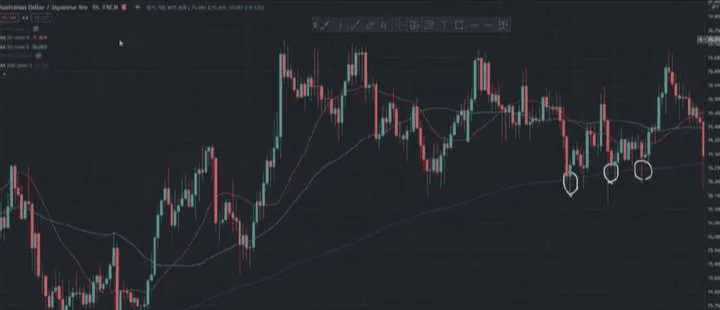
When we open the 20 and 50 EMA, we see that they seem to foolishly intersperse, and in a relatively slow or visually indistinguishable trend, the 200EMA is a good choice. I wonder if the above knowledge has given everyone some inspiration.
Second: How to use moving averages to help us achieve a threefold return on investment.
Next, I will talk about the second question that more friends are concerned about: how we can use moving averages to improve our trading. Here, I will divide it into two parts.
The first: use moving averages as a filtering condition.
Second: Use moving averages to find a better entry point and achieve a better risk-reward ratio.
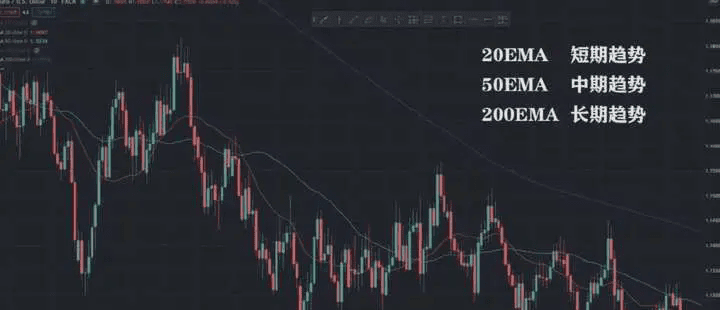
As we mentioned earlier, moving averages of different periods can reflect trends of varying strengths; the 20, 50, and 200EMA represent short-term, medium-term, and long-term market trends, respectively.
Here, I will take the long-term trend, namely the 200EMA, as an example. If the price remains above the 200EMA, we can judge that the long-term trend is upward; if the price is below the 200EMA, we can judge that the long-term trend is downward.
Of course, this is just a rough judgment method; ideally, you should use Price Action.
(Price Action trading method), but for beginners, Price Action is relatively complex. So, I suggest everyone, before learning Price Action, can temporarily use a 200EMA as a filtering mechanism to filter out trades that conflict with market trends.
I don’t mean to say that contrarian trading cannot be done. If done well, contrarian trading can also be very profitable. However, trading against the trend has a low win rate and relatively high requirements for market understanding. For friends with little experience, I hope you first learn to trade with the trend and try to follow the market's general direction with each trade.
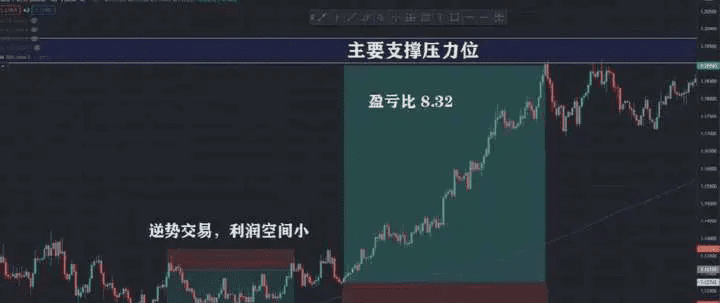
Let’s look at this example: If the price is above the 200EMA, and I see a sell signal, the logic would dictate that my take-profit should be set at the 200EMA.
On the contrary, if I engage in a trend-following trade and go long, my profit potential is much larger, as it can reach the next key level in the market (which is the main support and resistance level).
Generally speaking, trading with the trend is the best choice before the market reaches a pressure point. Just like the current BTC trend, from $1,800 to $20,000, from $20,000 to $30,000, from $30,000 to $40,000.
......
No one knows where the top is, so let’s not try to guess it.
The second thing.
How to use moving averages to find a better entry point and achieve a better risk-reward ratio
How to catch a big trend, here I will compare two trading methods using moving parallel lines, namely golden crosses and death crosses versus price interaction with moving averages. I personally believe that the more logical trading method is to watch the interaction between price and moving averages. On the same chart, two different trading methods, the same stop-loss point, the same take-profit point, but due to different entry timings, the results are entirely different.
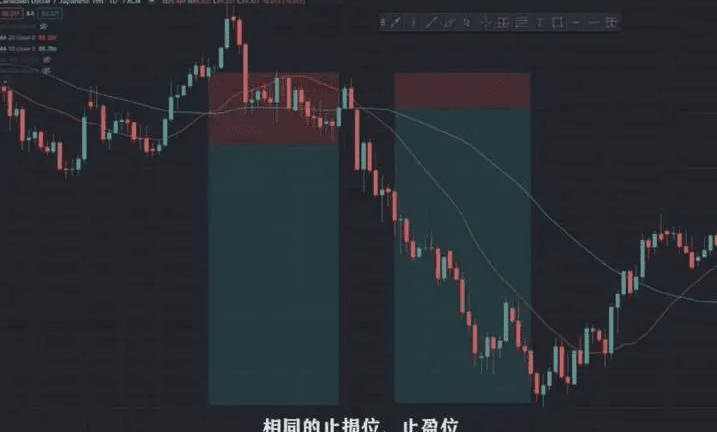
On the left is the signal where the 20EMA crosses below the 50EMA, with a risk-reward ratio of 3.65. On the right is the entry based on price interaction with the 20EMA, with a risk-reward ratio of 8.32. Ah! Did you see that?
Although this situation was deliberately chosen as an example, similar situations will continuously appear in the market. From the example of the left side's death cross, the 20EMA crosses below the 50EMA, using a high point as a stop-loss point. Assuming we are very skilled and can ride the entire trend, we can earn 3.65 times the return for every dollar risked.
Now let's look at the interaction between price and EMA, with all other conditions unchanged.
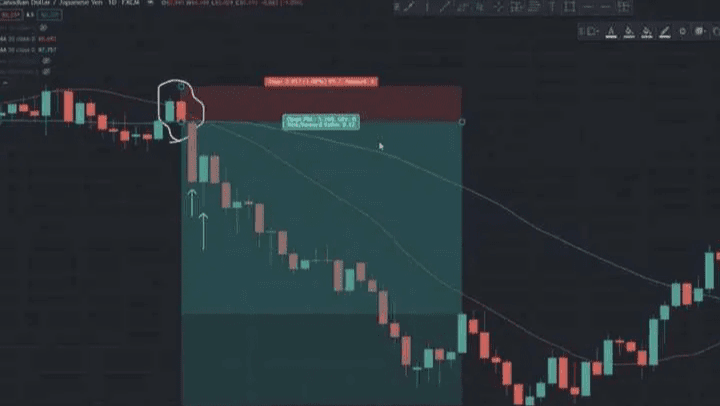
Because we saw the price make a false breakout at the 20EMA, and when the next bullish and bearish candle ended, a bearish engulfing K-line pattern appeared. We entered after two candles earlier than the death cross, reacting a little faster, so the returns were a bit higher.
Did you understand? As long as all conditions remain unchanged, if you have a better entry point, you will achieve a better risk-reward ratio. At critical moments, if you win once, it can offset several of your failed trades. Only by doing this, over time, can you make money, and make big money. Those who repeatedly enter and exit in short trades rarely make money, and it's exhausting.
So, for beginners, I sincerely advise you that there are hundreds of technical indicators available; you really don't need to learn them all. It’s better to choose one, dig deep into it, and master it; that will be enough for you.
I've seen too many experts who can achieve 100% profit just by relying on K-lines; countless.
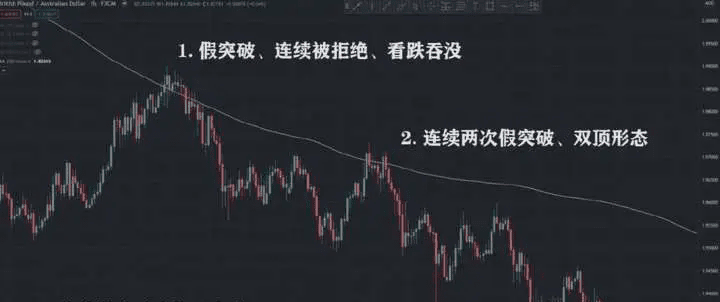
Next, let's look at another example of price interacting with the moving average. This is a 200EMA. Over this roughly one-month period, we see the price only had two opportunities to touch the moving average, meaning we only had two trading opportunities.
The first time we saw a false breakout at the 200EMA, along with a bearish engulfing pattern, and we saw the shadows indicating that the price had tried to rise but was rejected.
The second time we saw the price make two false breakouts near the EMA, adding a double top pattern, we again shorted just like the first time, and the results were good.
The earlier two examples were about using the interaction between price and moving averages to achieve a better risk-reward ratio. You should know that moving averages are actually dynamic support and resistance levels. Whenever the price pulls back to these key levels, we pay attention to whether there’s an opportunity to enter. Trades made at such positions typically offer a decent risk-reward ratio, which is a moving average trading method I personally recommend.
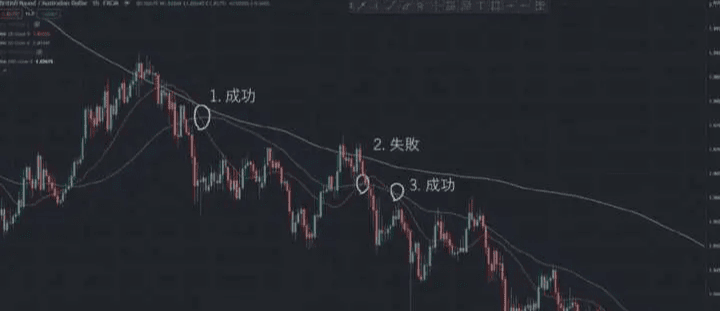
But when we compare the 20EMA and 50EMA, we see three trading opportunities during this period; roughly speaking, there are two profitable and one loss, which sounds pretty good.
But if we delve deeper, we will find that the risk-reward ratio of the two trading methods cannot be compared; the final profit differs by over 100%. Do you understand?
Continue to follow $LTO $KMD $AWE.
#特朗普家族加密项目 #特朗普首次使用BTC #BTC重返11万
I need followers, and you need references. Guessing is not as good as paying attention.